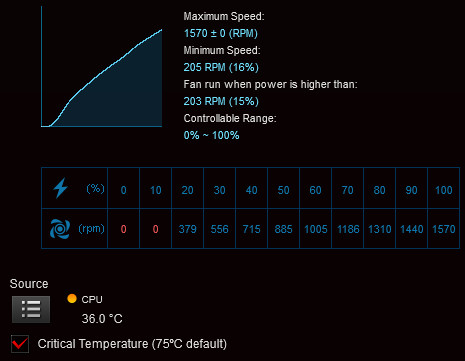Gelid Liquid 240 AIO Cooler
4. Tests
In order to test the CPU cooler we used the following configuration:
- CPU: AMD Ryzen 5 5600X
- Thermal compound: Gelic GC-4 (included at the retail box)
- Case: bequiet! Silent Base 802
- Case fans: 2x140 bequiet! Silent Wings 3 High-Speed RPM speed controllable via SmartFan BIOS + Asus Xpert4 software
- CPU Fan: Stock 120mm
- Motherboard: Asus X570 E-Gaming with 4603 BIOS
- Memory: 2x16GB G.skill Trident Z RGB CL14 @ 3200MHz CL14 (XMP Profile) @ 1.35V
- PSU: be quiet! Straight Power 11 650Watt
- HDD: Crucial MX500 SSD
- VGA: Asus 1060 6GB Dual
- Ambient room temperature ~ 25 Celsius (with AC climate control) - Environment Temperature measurements: Precision Gold N09AQ Envirometer Meter
- Sound measurements at 1m distance: miniDSP UMIK-1 microphone with calibration file and latest REW software
- Operating system: Windows 10 x64 with all the latest updates installed
- Software: AIDA64 / HWInfo / OCCT Enterprise Edition (Latest builds)
Before each run, we left the CPU cooler cooled down and we reset the OCCT Enterprise Edition values to be accurate.
We set the CPU fan speeds at "Smart Mode" with the Asus Xpert4 software. The case fans were also set at SmartFan mode with the option for Auto Fan Stop at low loads down to 0% for the two front fans and auto for the back case fan.


The CPU fans were detected from the Asus motherboard and gave us the following fan curve



Bios settings:
- Ai Overclock Tuner: D.O.C.P -> XMP DDR-3200 CL14
- BCLK Frequency: 100MHz
- FCLK Frequency: 1600MHz
- CPU core ratio: Auto
- TPU: Keep Current Setting
- Performance Bias: Auto
- VDDCR CPU Voltage: 1.100V
- VDDCD SOC Voltage: 0.900V
- DRAM Voltage: 1.350V (XMP)
- Precision Boost Overdrive: Auto
- Rest BIOS options: Auto
All tests were done with OCCT Enterprise Edition with a 30min run and we noted all temperatures as were noted from the software. For maximum temperature, we used the following settings:
- Data Set: Small
- Mode: Extreme
- Load Type: Steady
Under full load with 1.10V, the AMD 5600X reported around 58.24 Celsius (Average temperature), and the highest average temperature was recorded at 59.95 Celsius (average).
As we can see, the increased radiator and the second fan improved the overall performance of the Gelid Liquid 240 AIO and in fact, performed slightly better than other AIO products with bigger 140mm fans! In absolute numbers, you should expect at normal loads around 2-3 Celsius gain (compared with the AIO 120).

Placing the miniDSP UMIK-1 microphone around 1m from the closed case, we were pleased to get very low overall case+cpu cooler noise. The Gelid Liquid 240 AIO cooler performs very good also in noise levels, even the Arctic Liquid Freezer II 280 RGB has the lowest overall noise at full load.

Overclocking
Bios settings:
- Ai Overclock Tuner: D.O.C.P -> XMP DDR-3200 CL14
- BCLK Frequency: 100MHz
- FCLK Frequency: 1600MHz
- CPU core ratio: 45Χ
- TPU: Keep Current Setting
- Performance Bias: Auto
- VDDCR CPU Voltage: 1.18125V
- VDDCD SOC Voltage: 0.900V
- DRAM Voltage: 1.350V (XMP)
- Precision Boost Overdrive: Auto
- Rest BIOS options: Auto
Lastly, we wanted to see how this CPU cooler will handle even higher temperature loads, so we set the CPU multiplier to 45X and set CPU Vcore at 1.18V.
The Gelid Liquid 120 AIO in our previous test failed to produce a stable system, while the Gelid Liquid 240 AIO worked very well, and managed to keep the average CPU temperature around 80 Celsius, even the Arctic Liquid Freezer II 280 RGB and the be quiet! PureLoop 2 FX has better performance at this test. Small performance differences are to be expected, since for this test we used the included Gelid GC-4 thermal paste, when in previous tests we had used the be quiet! DC1 thermal paste...

